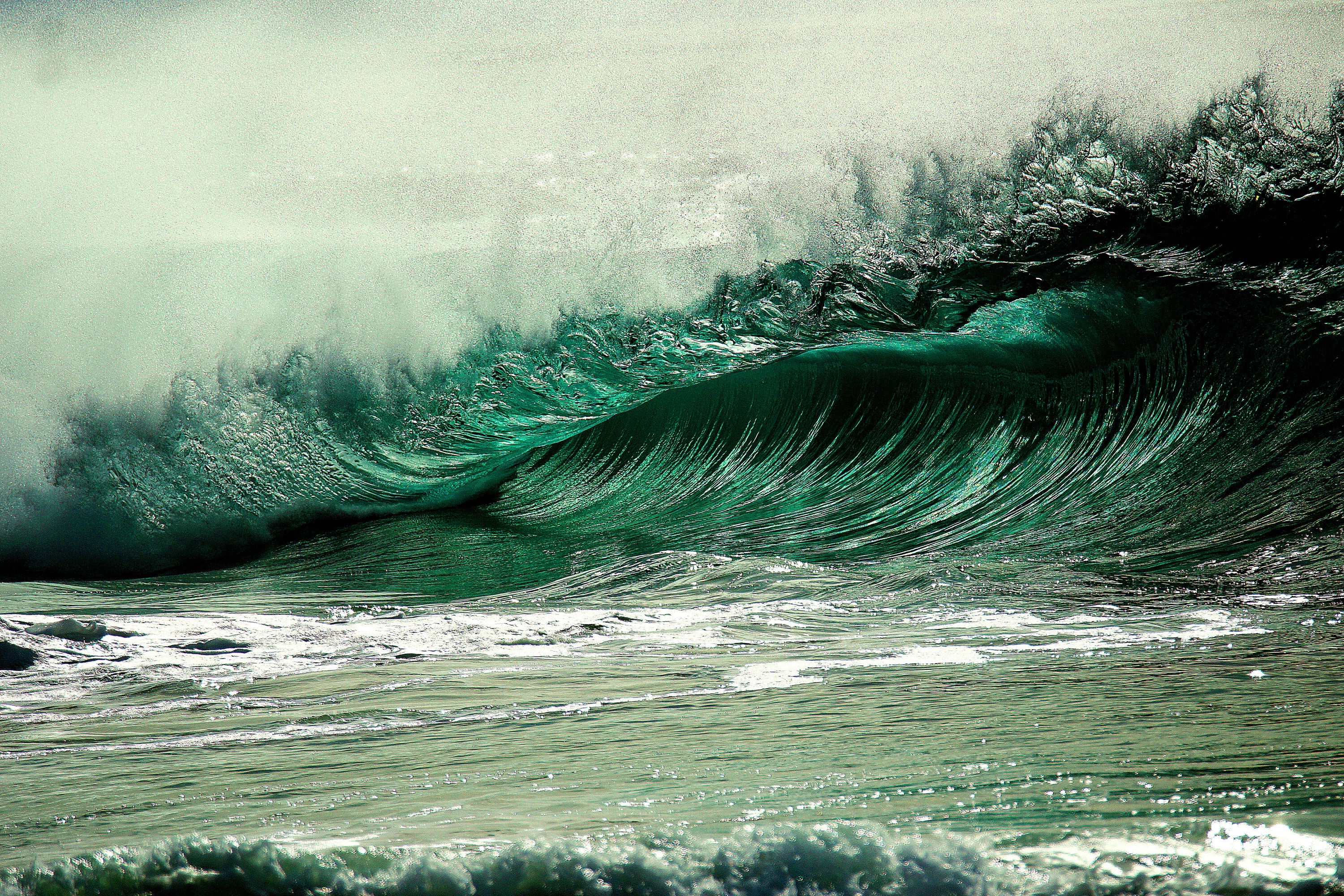
How to Fight Back Against Ocean Plastic
With an ever-increasing global population, demand for plastic remains high. It is estimated that in recent years almost 270 million tons of plastic is produced yearly, with 18.5% of that total being produced within Europe alone1, and this figure is likely to continue to grow over the coming years. Staple products we use in our everyday lives utilise plastic, and our desire for convenience continues to drive up plastic production2. Our phones and laptops, from which many of us have become inseparable, are all derived from fossil-fuel produced plastics.
In some respects, plastics, which are produced from finite petrochemical polymers (long chained molecules derived predominantly from oil) fulfils its use perfectly, and it’s clear why it’s used prevalently in many industries (such as the food, fashion and technology sectors) as their ‘go to’ material of choice for packaging and other uses. It’s durable, robust and can be moulded to fit our needs. But herein lies the issue with ever-growing plastic use – where does all this plastic end up once we’ve finished with it? All those single-use plastic-coated take-away cups from coffee shops that are thrown away daily and single use plastic bags, where do they go once they no longer serve their purpose? It took 77 million* years of organic matter decaying to form the fossil fuels that were refined into plastic, and single use plastics are thrown away readily, often without a second-thought. Just because they’re out of sight, this doesn’t mean they should be out of mind. (*Give or take a few hundred years…)
Focusing on Europe, it has been stated that roughly half of the plastic produced annually ends up in landfill sites3. The European Association of Plastics claims that 30% of plastics are recycled, either into new plastics or used in waste to resource technologies to generate heat. The process involved in recycling plastics to fit a new purpose can be energy intensive, but attempting to close off the sustainability loop at one end by using a readily available recycled feedstock, as opposed to synthesising new plastic, goes some way in promoting sustainable progress! The remaining plastic which isn’t involved in recycling schemes or decaying in landfills (themselves unsustainable) can end up contaminating the environment, particularly the aquatic ecosystems of our biosphere.
Plastic waste in the environment is a global issue. Due to the robust and recalcitrant nature of the molecules within plastic’s structure, plastic lingers within ecosystems. It is not readily degraded and it literally sticks around for years. That coffee cup that was used for ten minutes? Decades or more to degrade.
Once plastic contaminates aquatic environments, there can be huge detrimental effects to organisms at each level of the food chain. Higher mammals such as whales and dolphins are prone to mistaking plastic debris for food and ingesting it, leading to increased mortality rates within these species3,4. Many already endangered animals, including green turtles, are also coming under more threats from plastic pollution caused by anthropogenic activity5, causing a rapid decline in biodiversity. Migrating birds which fly thousands of miles around our globe are particularly susceptible to the hazardous effects of floating plastics on the ocean’s surface.
It is not only well-recognised animals which are impacted by plastic waste. Once plastic begins to break down, micro-plastics are formed; these small particles of plastic are transported throughout the water column and may also enter sediments. Some of the ocean’s smallest inhabitants, zooplankton, have been noted to be ingesting these small plastic fragments6. This is of concern as zooplankton are a key food-source for many fish species, which then accumulate the plastics within their tissues. These fish can end up in the food-chains of humans whereby these small plastics may be ingested and be harmful to health. This is an active and on-going research area, and the effects of the micro-plastics on both environmental and human health are just beginning to be explored. It is thought such small plastics may be able to act as disruptive agents within our endocrine system7; the physiological system in animals which regulates hormone production. Bacteria (and other microorganisms) within the ocean which help control correct ecosystem functioning and maintain global biogeochemical cycles (such as the carbon and nitrogen cycles) are also thought to be impacted through direct attachment to these microscopic persistent pollutants8.

So, are there any ways in which plastic pollution can be halted and our oceans protected from further damage? Despite some of the most extreme and remote oceans being negatively affected by human impact (plastic pollution has been seen in the waters of the high Arctic9), long-term management strategies could prevent further environmental destruction, if we act quickly.
Developments in sustainability hold promise in aiding the on-going fight to conserve the ocean’s natural capital. More sustainably produced materials such as plastic-like molecules produced from bacteria and plants could help drive down the use of oil-based commodities, and with dwindling oil reserves investments into greener alternatives to finite resources are much needed.
Plant based plastics derived from hemp have similar strength to oil-derived plastics, and have the added benefit of being produced from sustainable feedstocks. Cellulose, the main component of plant cell walls is extremely strong and rigid, and cellulose-based biocomposites can be degraded over time more rapidly than their oily counterparts. The smallest living organisms on the planet, the microbes, may also have a role to play in the future production of environmentally friendly products. Under certain environmental conditions, certain bacteria can naturally accumulate carbon-rich molecules within their cells. These carbon rich molecules (termed polyhydroxyalkanoates, or ‘PHAs’ for short) can be extracted from the bacterial cells and mimic the carbon backbone of plastic. These ‘bioplastics’ are again produced via renewable means and are biodegradable. Bacteria can utilise waste products (such as agricultural wastes) to grow on and produce these biomolecules, increasing the sustainability impacts of the process. Plant based plastics are gaining recognition within industry10, while bacterially produced materials have tended to lag behind. This could be attributed to the high-startup costs associated with microbial biotechnologies and therefore, bioplastics, so far, as a research area, remains in its infancy.
Having plastics derived from living organisms may seem futuristic and far-off, however there are easy steps everyone can take now to prevent further environmental degradation by plastics. By actively recycling plastic waste via local recycling programmes, using a reusable bottle/cup in place of single-use ones and by avoiding plastic bags (get yourself a cool tote bag!) are all small ways in which we can all cut down on our daily plastic use. Also, actively read into plastic-friendly companies (such as Bureo, who make skateboards from plastic salvaged from the ocean) who are all doing their part to covert old plastic waste to new products, thereby fulfilling the ‘three Rs’ of sustainability: reduce, reuse and recycle.
With global companies such as Nike pledging to invest funds into ensuring their packaging consists of more sustainable materials (in Nike’s case, plastic substitutes derived from plant resins11), and a greater public awareness about the importance of our connection to the planet, a move away from unsustainable oil-derived commodities might come sooner than we all hope. Finally, with the advent of novel alternatives, plastic may not find its way into our planet’s oceans quite as easily as it does now.
- Association of Plastic Manufacturers (PlasticEurope) (2016). An analysis of plastics: demand, use and waste data. Available from: http://www.plasticseurope.org/documents/document/20161014113313-plastics_the_facts_2016_final_version.pdf. Date accessed: 15/01/18].
- Worldwatch Institute (2015). Global plastic production rises, recycling lags. Available from: http://vitalsigns.worldwatch.org/sites/default/files/vital_signs_trend_plastic_full_pdf.pdf. [Date accessed: 15/01/18].
- Jacobsen, J. K., Massey, L. and Gulland, F. (2010). Fatal ingestion of floating net debris by two sperm whales (Physeter microcephalus). Marine Pollution Bulletin. 60: 765-767.
- Denunico, P., Bastilda, R., Dassis, M., Giardino, G., Gerpe, M. and Rodriguez, D. (2011). Plastic ingestion in Franciscana dolphins, Pontoporia blainvillei (Gervais and d’Orbigny, 1844). Marine Pollution Bulletin. 62: 1836-1841.
- Guebert-Batholo, F. M., Barletta, M., Costa, M. F. and Monteiro-Filho, E. L. (2011). Using gut contents to assess foraging patterns of juvenile green turtles Chelonia mydas in the Paranagua Esturary, Brazil. Endangered Species Research. 13: 131-143.
- Cole, M., Lindeque, P., Fileman, E., Halsband, C., Goodhead, R., Moger, J. and Galloway, T. S. (2013). Microplastic ingestion by zooplankton. Environmental Science and Technology. 18: 6646-6655.
- Cressey, D. (2016). Microplastics damage oyster fertility. Available at: http://www.nature.com/news/microplastics-damage-oyster-fertility-1.19286. [Date accessed: 15/01/18].
- Callaghan, M. L. (2016). Harmful bacteria may hitch a sea cruise on microplastic particles. Available at: https://www.popsci.com/microplastics-in-oceans-may-harbor-harmful-bacteria. [Date accessed: 15/01/18].
- Smithsonian Magazine (2017). Ocean currents are sweeping billions of tiny plastic bits to the Arctic. Available from: https://www.smithsonianmag.com/smart-news/part-arctic-ocean-suffering-plastic-pollution-180962985/. [Date accessed: 15/01/18].
- Scientific American (2010). Plastic from plants: environmental boon or bane? Available at: https://www.scientificamerican.com/article/is-plastic-from-plants-good-for-the-environment-or-bad/. [Date accessed: 15/01/18].
- Nike, Inc. (2012). Nike, five global companies accelerate development of products made of plants. Available from: https://news.nike.com/news/coca-cola-ford-heinz-nike-and-procter-gamble-form-collaborative-to-accelerate-development-of-products-made-entirely-from-plants. [Date accessed: 15/01/18].



